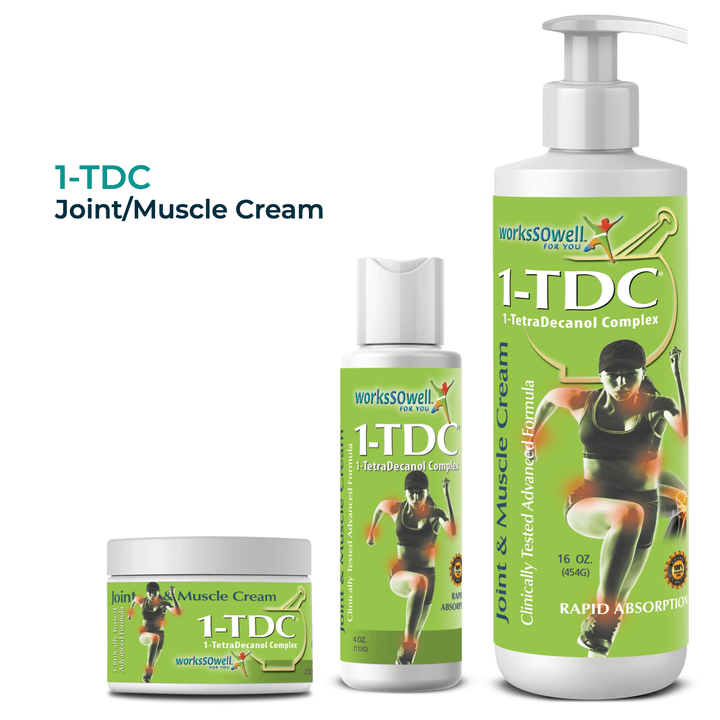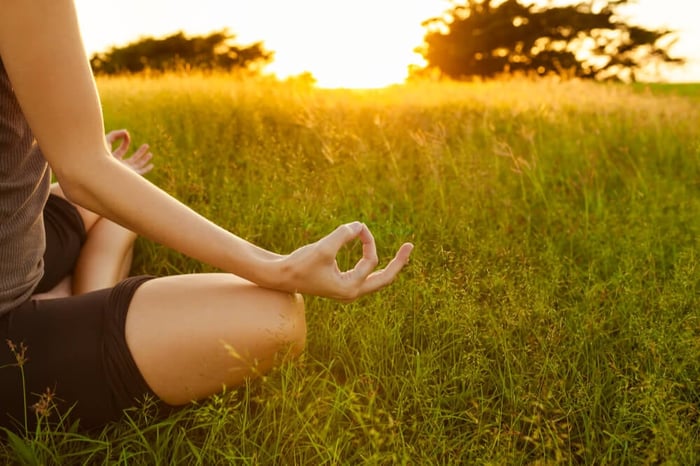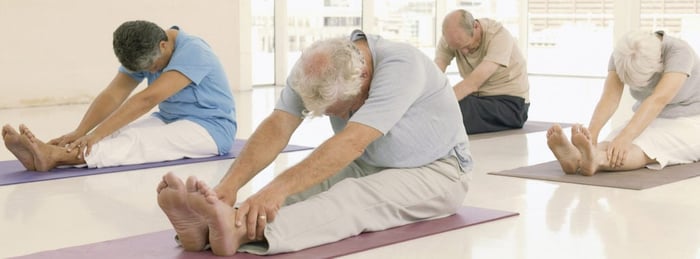The Mind-Body Connection: Healthy Mind, Healthy Body. You’ve surely heard of the mind-body connection. The way we think, believe, feel, and behave can actually affect our physical health. The mind-body connection helps to explain how the placebo effect works and why laughter truly is the best medicine: It can ward off depression, boost the immune system, and make it more likely that people with serious illnesses will survive. If you are on a quest to achieve better physical health, it’s important that you also achieve better mental health. Read on to find out some ways you can take advantage of practices that can help you have both a healthy body and a healthy mind.
Yoga
Yoga is an Eastern practice that gained popularity in the United States during the 1970s. While it started off as a “fringe” activity for those who were considered “hippies,” it’s now quite mainstream. You’ll find yoga classes available online and at your local YMCA, as well as in yoga studios. Some doctors and counselors will recommend yoga as a complementary treatment for physical aches and pains, as well as anxiety and depression. Mind Body Connection.
So, what can yoga do for your physical body? It can help you achieve better flexibility, which leads to less inflammation in your muscles and joints. Yoga can also burn calories, resulting in weight loss, and some forms of it can even boost your cardiovascular health. Practicing yoga can also help you sleep, which has many health benefits.

How can you integrate yoga into your daily routine? It can be as simple as learning a few of the positions and adding them to the end of your regular workout. If you currently belong to a gym, find out if they have yoga classes and, if so, sign up to take one or two per week. Over time, you’ll be able to spend a few minutes per day stretching and practicing; it might even become the most relaxing part of your day!
Meditation
Meditation is another time-honored practice related to the mind-body connection that can lead to not only better mental clarity and emotional control but also improved physical health. Meditation practices vary; one common way to meditate is to sit in a quiet room while concentrating on one sound, word, or phrase. When errant thoughts float into your mind, notice them and gently bring your attention back to your chosen focus. Over time, those who meditate will be able to bring about the relaxation response, which includes slowed breathing and a slower heart rate, even in the midst of stress.
Meditation has several physical health benefits:
- It can lower your blood pressure by relaxing the blood vessels.
- The practice can also enhance the immune system, which makes it less likely that you will get sick.
- It can improve irritable bowel syndrome and premenstrual syndrome for those who experience these conditions.
- Meditation can also help you get high-quality sleep.
It is simple to add meditation to your daily routine. You can start by simply taking two or three minutes at a time to focus on your breathing. Let random thoughts pass through your mind without you dwelling on them or judging them, advises Gaiam. As you continue practicing, you’ll be able to train your mind to continue the practice for longer periods of time. You can also use guided imagery audio files or scripts to help you along. Mind body Connection.
Aromatherapy
Aromatherapy, as the name implies, is the therapeutic use of scents, often in the form of diffused essential oils. You might already know that peppermint can make you feel more alert while lavender can help you relax, but did you know that aromatherapy can also improve your physical health?
- If you want to increase your circulation and improve your energy so you can boost your physical performance, consider diffusing cinnamon, clove, rosemary, jasmine, or sage oil.
- If you have skin conditions such as eczema or psoriasis or if you have a wound on your skin that needs to heal, using calendula, everlasting, or rosehip in your diffuser will help.
- Peppermint, sandalwood, and eucalyptus oil can relieve headaches; you can mix a couple drops of the oil with almond, coconut, or sesame oil and massage your temples and forehead with it, too.
- To boost your immune system, frankincense, lemon, oregano, and peppermint oils are useful.
Because aromatherapy really has no side effects, as long as you don’t have any severe respiratory conditions or allergies to the individual oils, it’s fine to experiment and see what works for you. For example, if you don’t like the smell of peppermint, it’s natural that using it might give you more, rather than less, of a headache. And if lavender makes you sneeze, you won’t feel very relaxed while smelling it.
One caveat is that you should not use undiluted essential oils on your skin, and many oils should not be taken internally. Using a diffuser or mixing with a carrier oil (or other liquids) and using for cleaning purposes are the safest ways to use essential oils for aromatherapy.
Using natural, alternative ways of boosting both your mental and physical health can help you feel better and can improve your athletic performance no matter what your sport of choice. Therein lies the importance of the mind-body connection.
$17.00
1TDC® Cream is the Gold Standard for Joint and Muscle Topical Soothing Relief. Rapidly and highly absorbed, paraben-free, and clinically tested. 1TDC® Cream…the Gold Standard for Joint and Muscle Topical Soothing Relief Rapidly and highly absorbed, reaching deep into… read more1-TDC® Joint and Muscle Cream










